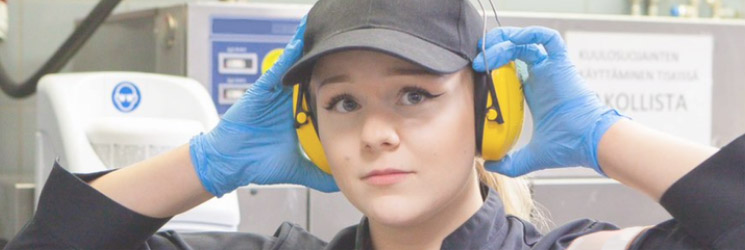

Working conditions
Repetitive work
Repetitive work refers to work that involves performing the same simple operation over and over. Repetitive work is made up of operations that are similar in length, the amount of strength required or the physical action involved. Repetitive work is usually defined as any task in which each operation takes less than 30 seconds to perform or involves repeating the same actions more than half of the time, regardless of the length of the operation.
Repetitive work occurs most often in the industrial sector, construction, agriculture and the service sector.
Repetitive work can cause various kinds of upper limb pain and strain injuries. Strain injuries usually affect either the wrist or the elbow. Examples of these kinds of strain injuries include tenosynovitis in the wrist, epicondylitis (tennis elbow) and carpal tunnel syndrome.
Strain injuries and disorders are often caused by a combination of several factors. Factors contributing to the strain caused by repetitive work include
- posture
- the number of times that an action needs to be repeated
- the length of the operation
- the need to use force
- grip (e.g. stretching or pinching)
- twisting of the wrist
- mechanical strain on the hand
- cold and vibration, and
- personal traits (such as age, gender, build or inexperience).
The most efficient way to eliminate the strain caused by repetitive work is to automate monotonous operations that need to be performed in time with machinery. If this is not possible, employees’ workload can be reduced by redesigning workstations, the work environment, work equipment and procedures.
Efforts to reduce the strain of repetitive work should focus, above all, on ensuring that:
- workstations are sufficiently spacious for performing the work and for working in different positions
- workstations, work surfaces and seats are at the correct height and easily adjustable
- the pace of work is not set by machinery and the actions required are not monotonous
- any work that requires a large amount of force can be performed standing up and work that requires good hand-eye coordination can be performed sitting down
- the work can be performed without having to lift arms above shoulder height or use large amounts of force (e.g. holding up, pushing or pulling of heavy objects, or squeezing or twisting objects by hand or fingers)
- the work can be performed without having to twist the wrist or constantly grip objects by hand
- the tools provided are designed for the work in question, easy to use and light (if necessary to relieve strain)
- no mechanical strain is put on employees’ hands by the work equipment, the products they work with or workstation design
- the workspace is neither too hot nor too cold for the work, there are no draughts, and employees are protected from the cold
- gloves are provided to protect employees against injury, the cold and impurities, and
- employees’ hands are not subject to vibration or shocks.
If it is not possible to prevent the harmful effects of monotonous work by the aforementioned means or if the preventive measures do not cover all aspects of the work, other arrangements must be made to reduce employees’ workload. Examples of such arrangements include rotating employees and giving them more breaks. Any rotation-based arrangements must be planned so as to make each task sufficiently different from the next and so that employees are rotated sufficiently frequently during each shift.
Employees also need to be taught to use techniques that do not put an unreasonable strain on their upper limbs. Occupational health care professionals, such as occupational physiotherapists, can be consulted if necessary.

